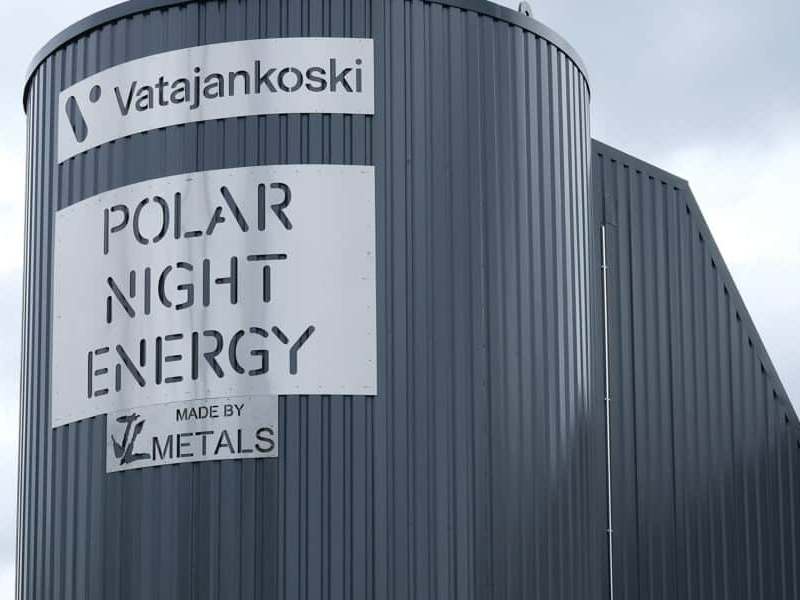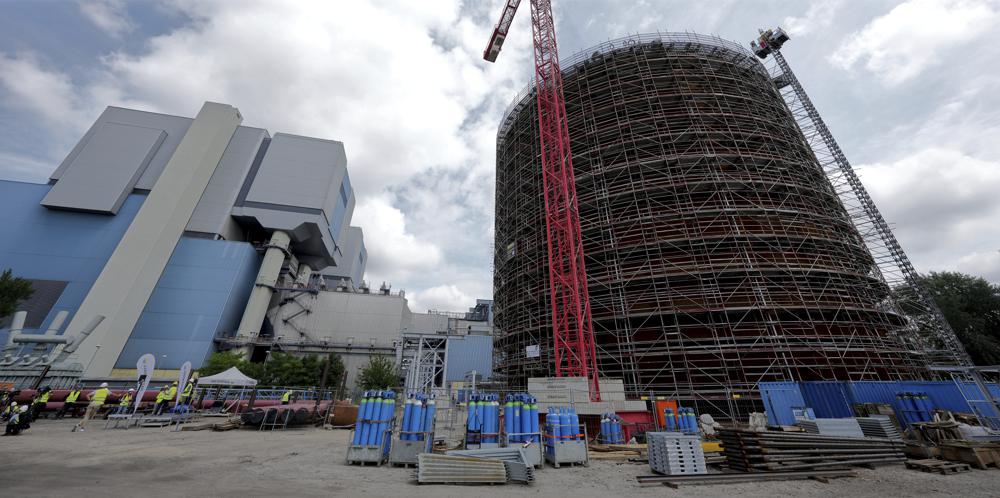According to the goals of the Paris Agreement, the global average temperature increase this century must be limited to 1.5 degrees Celsius.
With climate change and the rapid rise in the price of fossil fuels, countries need to vigorously develop renewable energy.
However, renewable energy sources such as wind energy and solar energy generally rely on the sky and have intermittent characteristics. They cannot generate electricity on demand. Therefore, while increasing investment in them, energy storage should also be done well.
From traditional lithium-based "super-large" batteries, to flow batteries, silicon phase change batteries, molten salt batteries, iron-air batteries, gravity batteries, carbon dioxide expansion batteries, etc., countries have tried various methods to store energy.
With the changes in the international situation, the price of natural gas in Europe has soared, which has affected the energy security of Europe. In response to climate change and the energy crisis, European countries have also proposed various energy storage solutions.
Finland: Enables "sand battery" heating system Finnish startup Polarnight Energy and energy utility Vatajankoski have jointly built the world's first "sand battery" that can be powered by solar and wind energy - a commercial sand-based high temperature heat storage system.
Sand is durable, inexpensive, and is a very efficient medium for storing heat with little heat loss over time. In the "sand battery", a steel container with a width of about 4 meters and a height of about 7 meters has an automatic heat storage system and contains about 100 tons of sand.
So, how does a "sand battery" work? Whenever there is excess solar and wind energy, the "sand battery" uses this energy to heat the resistance to bring the sand to 500 degrees Celsius. This creates hot air, which circulates through the sand through a heat exchanger.
The developers say their device allows the sand to store a lot of heat at temperatures between 500 and 600 degrees Celsius for months. The heat storage system can release up to 100 kilowatts of heat and electricity, with an energy storage capacity of 8 megawatts. It provides energy during Finland's long winters, keeping homes, offices, factories and even the local swimming pool warm.

Germany: Prepare giant heating "thermos"
In order to get rid of its dependence on external energy, Berlin, Germany has prepared a huge "thermos" to help people warm up this winter.

This huge "thermos" is actually a hot water tower, which stores not electricity, but heat. Sweden's Great Falls Power Company, which built the hot water tower, said the thermal energy storage facility is 45 meters high and can hold 56 million liters of hot water. Its huge insulated water tank keeps the water hot for up to 13 hours.
The "thermos" can alleviate the problem of fluctuating renewable energy supply by converting excess heat generated by renewable energy into thermal energy for storage and releasing energy as needed.
The €50 million facility, with a thermal capacity of 200 megawatts, stores thermal energy that keeps large amounts of water at near-boiling temperatures without interruption, enough to cover most of Berlin's hot water needs in summer or in winter. About 10% of the water demand.
"It's a giant 'thermo bottle' that stores heat when we don't need it and releases it when we need it," said Thanja Virgos, head of the German heating department at Great Falls Electric Power Company. And save other heat sources, such as extracting and saving thermal energy from high-temperature wastewater in industrial production.
Berlin's top climate official, Bettina Jarrasch, said that because of its location, the Berlin region is more dependent on exotic fossil fuels than the rest of Germany. The international situation and the energy crisis make them need to speed up the construction of such thermal storage systems.
Norway: Building a concrete-based commercial "thermal battery" As demand for electric vehicle batteries and energy storage batteries increases, experts predict that by 2030, the EU will demand 18 times as much lithium as it did in 2020, and five times as much cobalt. By 2050, the EU will demand 60 times as much lithium and 15 times as much cobalt as it did in 2020. But today Europe has only one lithium mine in Portugal. At the same time, cobalt supply is highly concentrated in a few markets, with the Democratic Republic of Congo having more than half of the world’s cobalt reserves and Australia having 20%. Solving supply chain issues is key to Europe's energy transition.
EnergyNest, a Norwegian thermal energy storage technology manufacturer, was established in 2011. It developed a "thermal battery", a concrete-based heat storage system, to support decarbonization in industrial processes. The "thermal battery", called Heatcrete, stores heat primarily through a specially formulated concrete, which the company claims is very low-cost and can be recycled harmlessly. According to EnergyNest's official website, the material can last for 30 to 50 years without degrading.
A high temperature heat transfer fluid (HTF) can be injected into the "hot cell" through the steel pipe to heat the concrete, then as the "battery" discharges, the cold HTF flows into the bottom of the "battery" unit and the heat flows out from the top.
The "thermal battery" uses a modular design and is installed in a modular steel pipe about 6 meters long. The system is economical and compact, with high energy density, low heat loss, and capacity expansion from megawatt-hours to gigawatt-hours.
In 2016, the heat storage system achieved its first demonstration application on the solar thermal power generation platform of the Masdar Institute in Abu Dhabi. In 2021, EnergyNest received a €110 million investment from an infrastructure equity investor.
Currently, the company is building the first commercial "thermal battery" in Sicily, Italy. Handelsblatt reported that the company's "thermal battery" could be decisive for the industry to move away from natural gas and decarbonize in general.


![]() November 11, 2022
November 11, 2022






